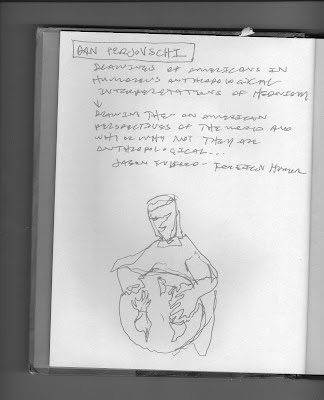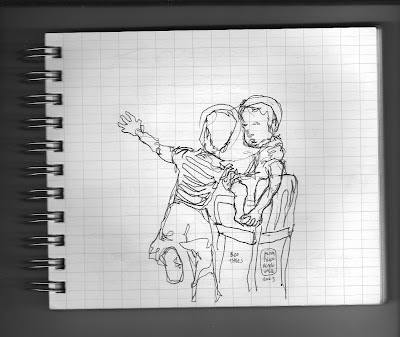After attending the AGDA (Australian Graphic Design Association) event with Damian Borchok, CEO of Interbrand for the Australia and New Zealand markets, I'd like to share my notes on "How to Run a Successful Branding Studio".
Damian kicked off the talk with a poignant subject that I returned to with a question at the end. He used the comparison of the Design industry to that of Law, pointing out that Design is a relatively small market. He questioned the size of the design market when the value of the service and thinking that surrounds it is proven now by firms like Apple, and given that there are so many lawyers competing with each other in a robust market.
By doing some research of my own to prove Damian's assumptions, the Law Council of Australia released figure from an LCA Brief in 2009 showing that, at the end of June 2008, the legal profession employed just under 100,000 people (99,696) and generated $18 Billion during the 2007-2008 financial year, contributing $10.9 Billion to the Australian economy.
The same information for designers can be found as a paying member of DIA, the Design Institute of Australia or directly accessed through the Australian Government Job Outlook. As recently as November 2011, the number of Web Designers and Illustrators in Australia was 45,500, almost exactly half that of legal professionals. The average salary has been hovering around $45,000 p/a depending on where you look, in this case the Payscale Australia website. There are other figures with My Career here. These 45,500 designers generated just over $2B in Salaries.
Here's the fun part, getting a figure of gross profit from the salary figures we have. Based on a 50% business efficiency ratio, each designer is worth about $90,000 in profit per annum. So $2B worth of salary industry wide gives us $4 Billion of design revenue produced in Australia in 2011.
With these rough numbers, we get the idea that for 1/2 the workforce of the legal profession, Australian graphic designers produce less than 1/4 of the revenue legal professionals produce. As for their contribution to the Australian economy, Graphic Designers can argue that their visual contribution yields a larger percentage of value to the average consumer than that of lawyers and barristers.
So here's where we get into the question I had to ask Damian at the end of his talk. Given the numbers that we now know, (and yes, possibly fudged), what can the 45,500 designers out there do to convince our clients and customers that we are worth twice as much as we are now, to be on par with our friends in the legal profession?
Damian's response was brilliant. He reminded us how young our profession is, relative to law and even medicine. His first point was that doctors were considered charlatans in the 19th century, and only in the last hundred years have they gained the level of respect they now deserve in the community. No comment on the amount of respect lawyers deserve in the community. They can afford to be the butt of all jokes.
Regarding the last hundred years, Damian gave another example. What was the global value of management consultanting in the 1920's? Truth is it hardly existed. The profession began with "time and motion studies" of business efficiency, basic mechanics of improving a system that has now ballooned to include all kinds of applications, software, and training of hard and soft skills to better manage people. There's an industry to crunch some numbers.
By comparison, a report on IBIS World says that Australia has roughly 35,000 management consultants that gross an average of $8 Billion in revenue. That report also points out that the industry is experiencing about 2% in annual growth. What I failed to mention from the Australian Government Job Outlook porthole on graphic designers is the 6-8% growth figures they project. If we are invited to slice that growth anyway we want it, we could exercise a few options:
1. We could plan to hire 6-8% more designers making the same average of $45-48K.
2. We could keep the number of designers static and earn more like $55K on average.
3. We can secure Australian contracts and move to India, living like it's $200K.
Short of outsourcing ourselves to India, I'd advise fellow designers in Australia to follow the example of the management consulting profession, which has been around even less than graphic design if you look at the work of Toulouse Lautrec as modern design from the 1800's. If Design can be raised to the same business value as management consulting the way Blair Enns in his Manifesto and others have outlined, we should have no problem accounting for $8 Billion of revenue with 10,000 more people to produce it than the 35,000 consultants out there proving their business relevance.
It's not hard to do, either. Sit down with your clients and talk them through everything they have going on. Write it all down. If you are a designer I'm sure you will draw some pictures. This is the beginning of your scope of work that adds true business value to the big ticket items that are first from your clients' lips. If you can put a dollar figure on achieving those goals, and can lay out a plan to achieve them in a design campaign, you both may be suprised at how quickly that broad conversation takes your relationship to new heights.







No comments:
Post a Comment